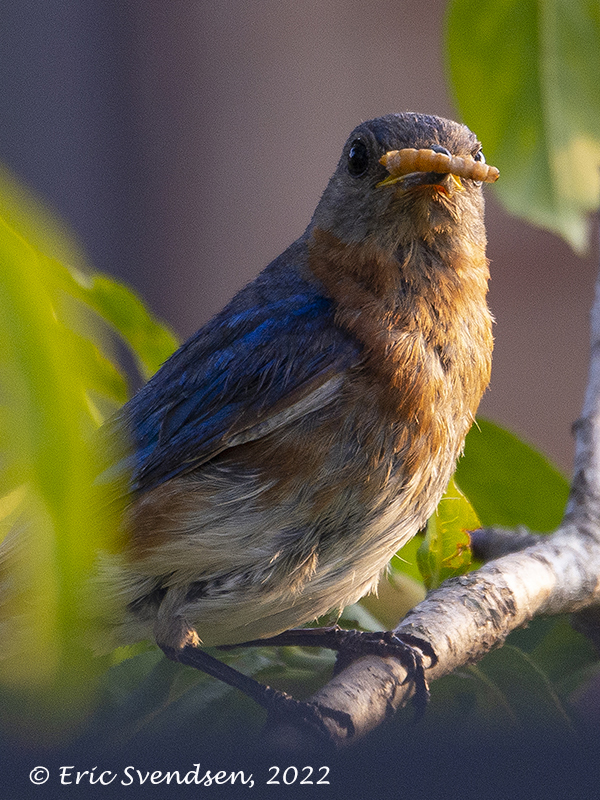Eastern bluebird with mealworm grub
 |
I found the colouring of this particular individual somewhat paler than expected. It turns out that nutrients play a role in how colourful a bluebird is. Poor nutrition results in less intense blue colours. I can only surmise that the bird's dependence on being fed a steady diet of mealworms has something to do with that. Although mealworms contain generous amounts of essential amino acids and fats, they do not have all the necessary ingredients representing a balanced diet.
I am all for feeding birds, but it is important to provide good food for them that will either help sustain them over the winter or augment their varied diet. The nutrient value of mealworms can be augmented by gut-loading or dipping them in a nutrient-dry bath. Pets that eat mealworms (lizards, birds, fish, and so on) benefit from essential nutrients found in such additions. Mealworms are rich in phosphorous but low in calcium and, as such, could render its consumer at risk.
If you use mealworms to feed/attract birds, augment their nutritional value by dusting them with powder supplements. Who knows? You may end up with a very blue bluebird.
Thanks for reading.
Eric Svendsen www.ericspix.com



Comments
Post a Comment